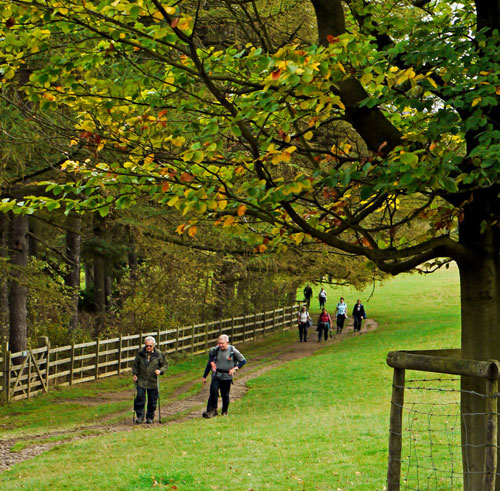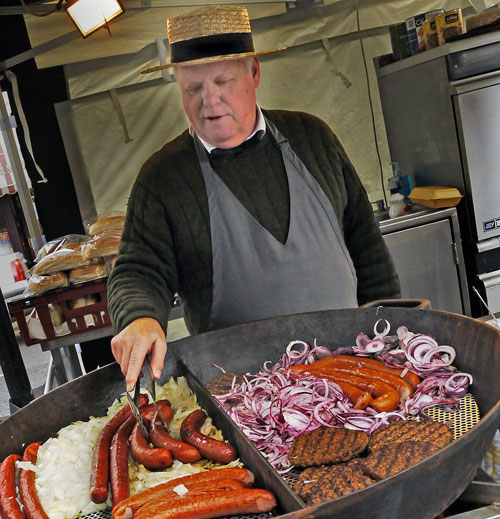Friday Photo Tip: How to improve your rainy day photos
posted Friday, August 24, 2012 at 6:13 PM EDT
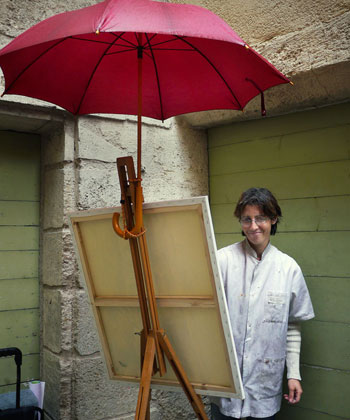
It really was “a dark and a stormy night” as we drove through the English Midlands, in a cold, autumn rain. It was my first trip to the UK and I was loaded for photographs. However, with the morning, I could only stare at the BBC weather lady talking about at least a week of lousy weather.
My expectations for picture taking were fading and every raindrop was like another great shot going down the sewer. Images of sunlit pasturelands and groups of happy walkers in their Wellies (Wellington boots), were washing away under the dismal skies.
However having lived in Seattle, the famous “Rain City,” for over thirty years, I knew something about shooting in lousy weather. Shaking off the rainy day blues, I thought about how I could salvage the trip and get some interesting travel photos, despite the gloomy weather.
Shoot at midday
Living in the Northwest, I had learned that on bad weather days—that is, most days—midday is the best time to shoot. Usually, there is a break in the weather and the sky is brightest around noon or one.
I knew too that on cloudy days, the light is more diffuse. That is, it is much softer than on a sunlit day.

Diffuse light has a limited contrast range, which means that the camera’s sensor can easily capture a scene’s entire contrast range. The shadows are not as dark, highlights not as hot and certainly not as likely to blow out. Best of all, diffuse light seems to wrap itself around subjects.
These two factors meant that by carefully choosing my subjects I could still get good photos.
Gray day compositions
While light and color are at the heart of photography, composition is essential for giving photographs impact and it is not weather dependent. One way to compose a photo is to frame your subject within the frame of the photo.
Trees and doorways, for example, work well as framing devices. On sunny days, shadows are too dark and things you use to frame subjects with record black and without detail.
Thanks to the lower contrast of a gray day, framing devices retain detail and even some lighter areas. The photo taken on a bus illustrates this, as does the photo of the two walkers in a pasture. See both images below.
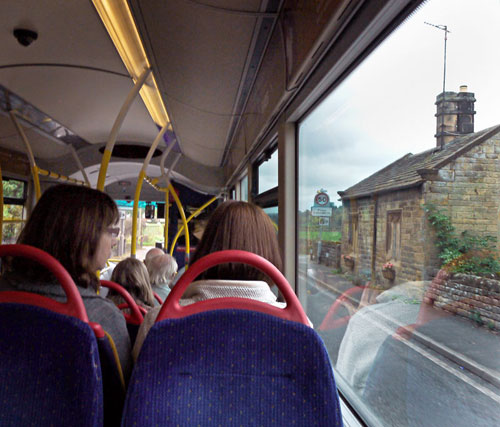

We see some the inside of the bus as well as the outdoors. Even with using HDR, this would be almost impossible to capture on a sunny day.
When it is overcast, I try to frame the sky out of my scenics by using a very high horizon line. In compositional terms, small areas of light visually “balance” very large dark areas.
But, if the light areas are too big they will dominate the image. The landscape photo demonstrates how even the little bit of sky can pull your eye away from the main subject.
Rainy days also force you indoors and, luckily, our friends had some fall back places for us to visit. One was a lively, local livestock auction, where the auction hall’s heavy metal guard fence provided me with a great frame within a frame device for the image of a steer that was on sale.
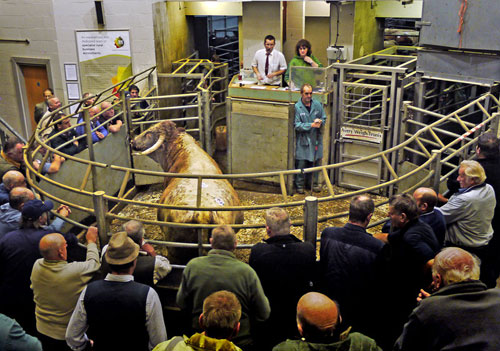
Even the way people deal with rain and rainy days can be a source of interesting images in foul weather, demonstrated in the photo of the street artist (at the top of this story) who attached an umbrella to her easel and kept on painting despite a drizzle.
That’s the spirit we photographers should have too: don’t let the rain get you down!
